When you think of Italian pasta, spaghetti usually takes the spotlight. But Italy is home to hundreds of pasta shapes and recipes — many just as famous, delicious, and beloved. If you’re planning to eat your way through Italy, here are five classic pasta dishes you absolutely can’t miss (that aren’t spaghetti).
Don’t be surprised if some truly genuine Italian restaurants won’t serve spaghetti – I even remember encountering a small place in Florence where the menu was written by hand and the first two rows read: NO PIZZA! NO SPAGHETTI!
If you made it here, I encourage you to step out of the ‘boring’ same-old and try these spectacular pastas. You won’t believe how much better they taste in Italy. I promise they will deliver.
Some of these pasta dishes are assorted to a region from which they come from, but you will most likely be able to order them everywhere. So here we go! Bon appetit!
1. Trofie al Pesto (Liguria)
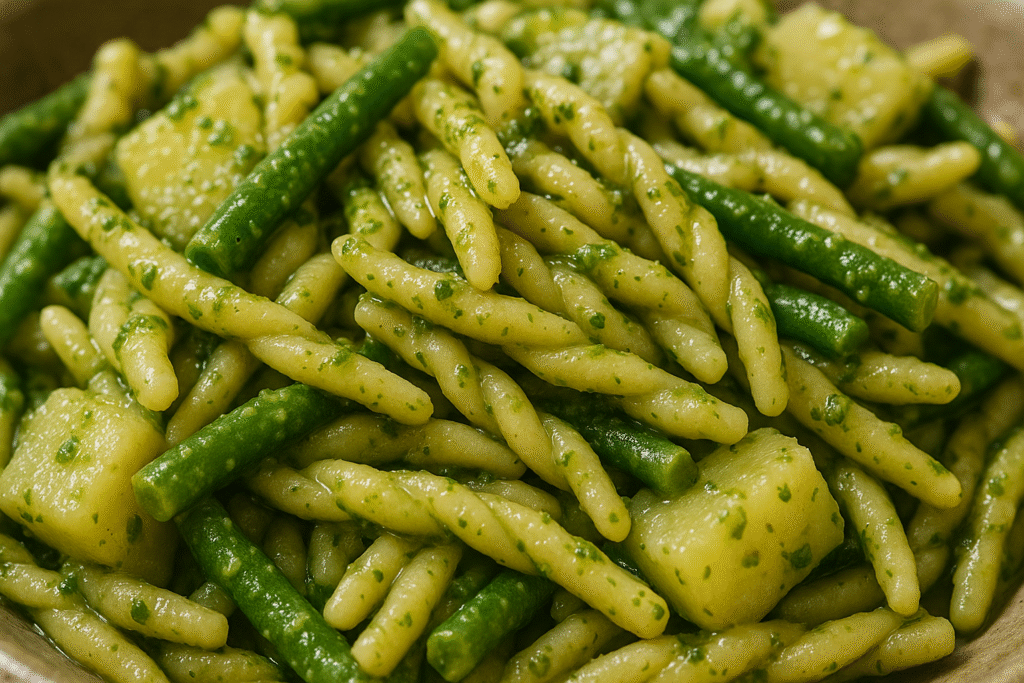
- What it is: Short, twisted pasta traditionally served with pesto alla Genovese (fresh basil, pine nuts, Parmigiano, garlic, and olive oil)
- According to local lore, Ligurians never measured pasta dough with scales. Instead, women making trofie would pinch off small bits of dough, twist them, and estimate the right quantity by habit and touch. There’s an old saying in Liguria:
“Le trofie devono essere tutte diverse, come i fili d’erba nei prati.”
(“Trofie should all be different, like blades of grass in a meadow.”) - In traditional Ligurian homes, trofie with pesto are often served with potatoes and green beans boiled in the same pot as the pasta. This not only stretches the meal for more mouths (important in large seafaring families) but also adds texture and sweetness to balance the pesto. Locals still swear that this method makes the sauce cling better to the pasta.
- Why try it: This is the authentic way to enjoy pesto — fresh, aromatic, and full of Ligurian flavor. Forget jarred pesto; this is the real deal.
2. Tagliatelle al Ragù (Bologna)
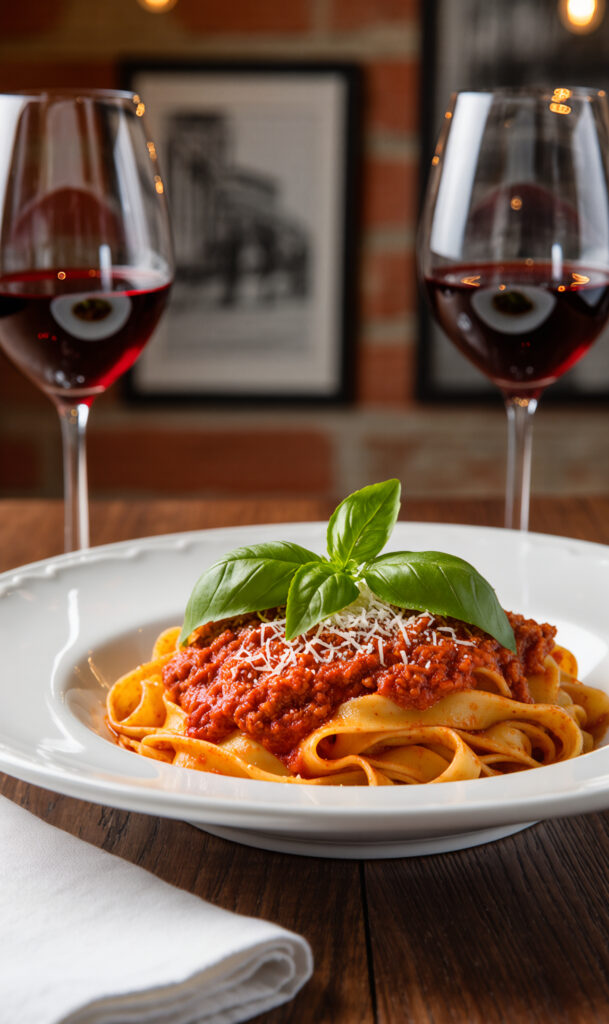
- What it is: Flat, ribbon-like pasta, very yellow in colour because of high egg content, coated in the original “ragù alla Bolognese.”
- A famous Bolognese legend says that tagliatelle were invented in 1487 by Maestro Zefirano, a cook in the service of the Bentivoglio family, to celebrate the marriage of Lucrezia Borgia. He was so inspired by her golden hair that he created pasta ribbons in her honor.
- And here’s a quirky local truth: in Bologna, ordering “spaghetti bolognese” is almost a sin — the dish doesn’t exist in local tradition. If you ask for it, you’ll likely be corrected and steered toward tagliatelle al ragù, the real deal.
- Why try it: Forget “spaghetti Bolognese” — in Italy, the sauce belongs with tagliatelle. The wide pasta holds the meaty sauce beautifully.
3. Penne all’Arrabbiata (Rome)
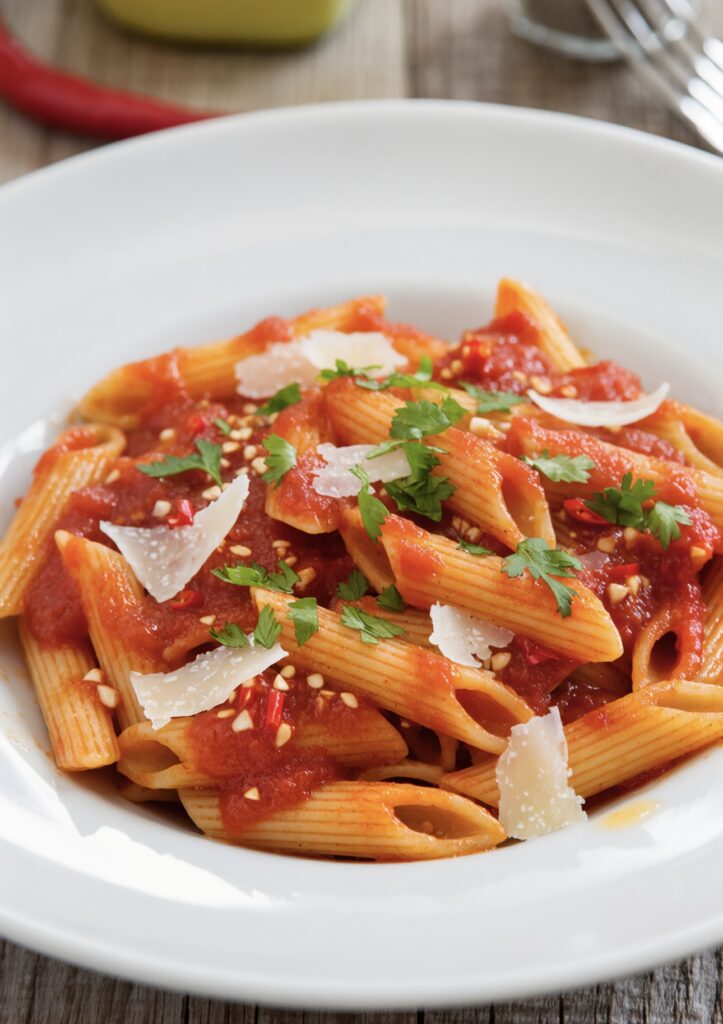
- What it is: Short, tube-shaped pasta tossed in a spicy tomato sauce with garlic and chili. It embodies Roman cucina povera (poor kitchen): cheap, quick, and deeply flavorful.
- Romans joke that Penne all’Arrabbiata is the pasta of late nights and broken hearts. In the 1960s, it became a favorite in the city’s trattorias that stayed open after midnight, perfect for hungry actors, musicians, and night owls.
One colorful saying goes:
“Se piangi mangiando l’arrabbiata, non sai se è per il peperoncino o per amore.”
(“If you cry while eating arrabbiata, you don’t know if it’s from the chili or from love.”) - Why try it: Simple, fiery, and full of character — a Roman favorite for those who like a kick.
4. Fettuccine Alfredo (Rome, with a twist)
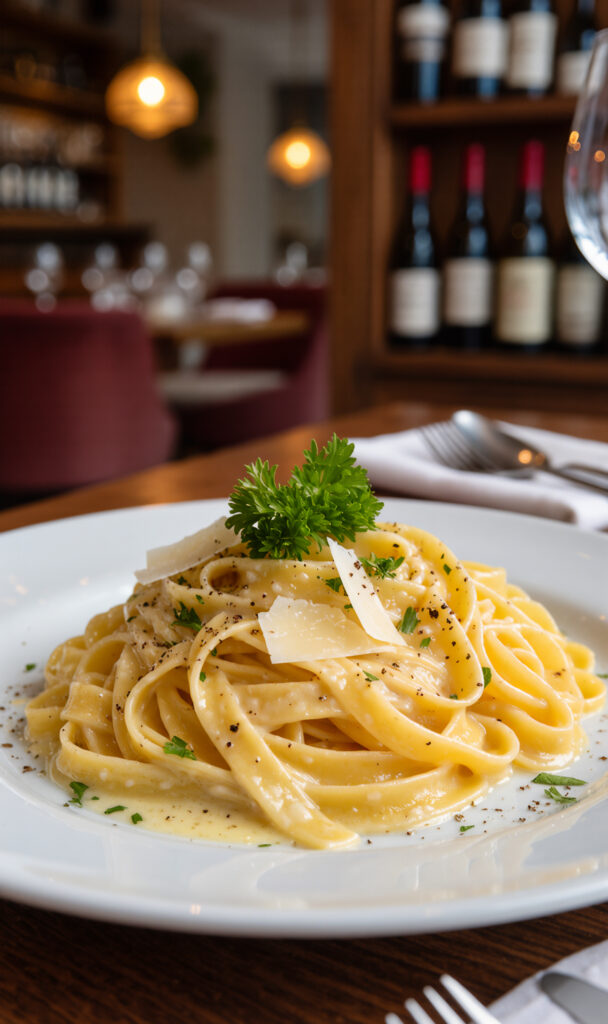
- What it is: Wide fettuccine tossed with butter and Parmigiano Reggiano.
- The dish was created in Rome in 1914 by Alfredo di Lelio, who ran a small restaurant. Alfredo prepared it as a nourishing dish for his wife Ines, who had lost her appetite after giving birth. The creamy effect came from the emulsion of butter and cheese with a splash of pasta water — no cream, garlic, or heavy sauces.
- Romans at the time knew it simply as fettuccine al triplo burro (“triple butter fettuccine”), but it was Hollywood that turned it into the legend we know today. In the 1920s, Mary Pickford and Douglas Fairbanks, two Hollywood superstars on their honeymoon in Rome, ate at Alfredo’s restaurant. They fell in love with the dish. Word spread quickly in Hollywood, and soon “Fettuccine Alfredo” became a sensation in the United States. By mid-century, it was on menus in Italian-American restaurants everywhere — often with cream and extra ingredients added for a richer, more theatrical presentation.
- Why try it: The original Roman version is creamy without cream — just pure pasta, cheese, and butter magic. (Very different from the Americanized version!)
5. Orecchiette alle Cime di Rapa (Puglia)
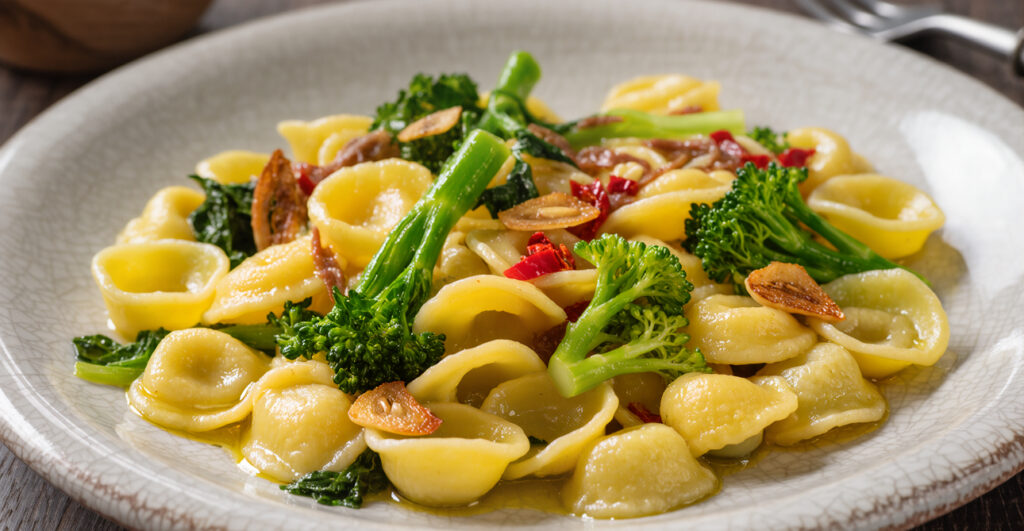
- What it is: “Little ears” pasta paired with bitter broccoli rabe, garlic, anchovies, and olive oil.
- In Bari Vecchia, the city’s old quarter, you can still find women sitting outside their doorways, rolling orecchiette by hand on wooden boards. They sell them fresh to passersby, a scene so iconic it has become a kind of living postcard of Puglia.
A local saying goes:
“Le orecchiette sono come le donne di Bari: piccole, forti e tenaci.”
(“Orecchiette are like the women of Bari: small, strong, and tenacious.”) - Another charming custom: during weddings in Puglia, orecchiette were traditionally given as a symbolic gift to bless the union with prosperity and fertility — a plate of pasta as a wish for abundance in the household.
- Why try it: A southern Italian classic that’s both rustic and unforgettable, showing how pasta can highlight simple, fresh ingredients.
Final Thoughts
Italy’s pasta culture is so much more than spaghetti. Each region has its own specialties that reflect local traditions, ingredients, and history. From fragrant pesto in Liguria to spicy penne in Rome, these dishes are must-tries if you want to taste Italy like a local.
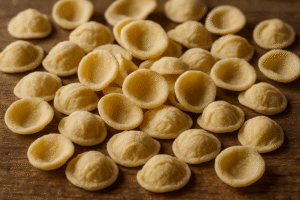
If you like this type of content, you are welcome to go through my blog! Otherwise you can also follow my Pinterest account: https://www.pinterest.com/ikigaimind/
